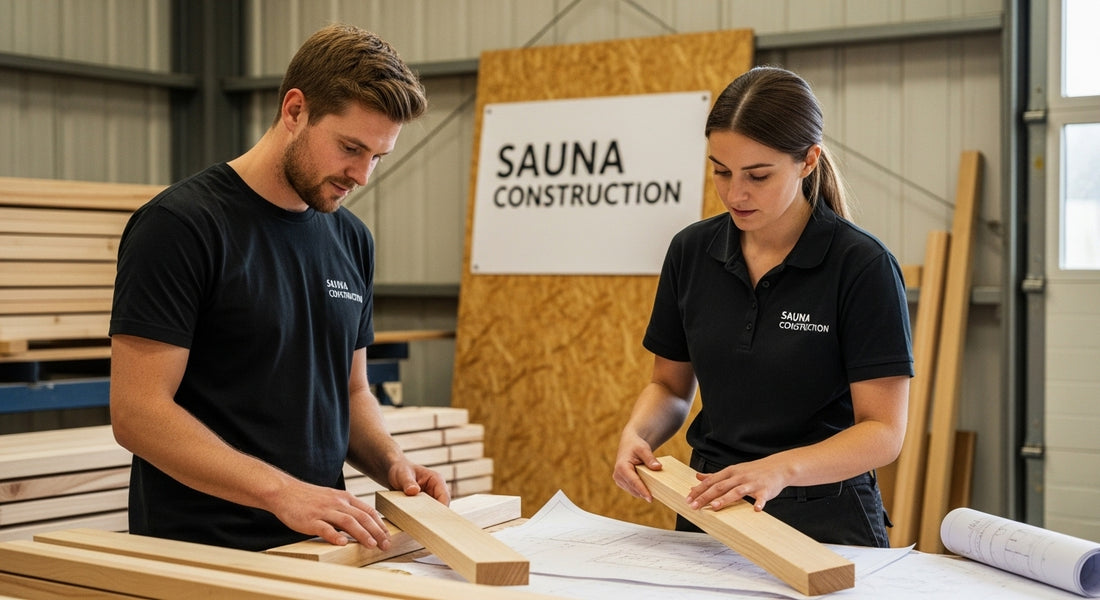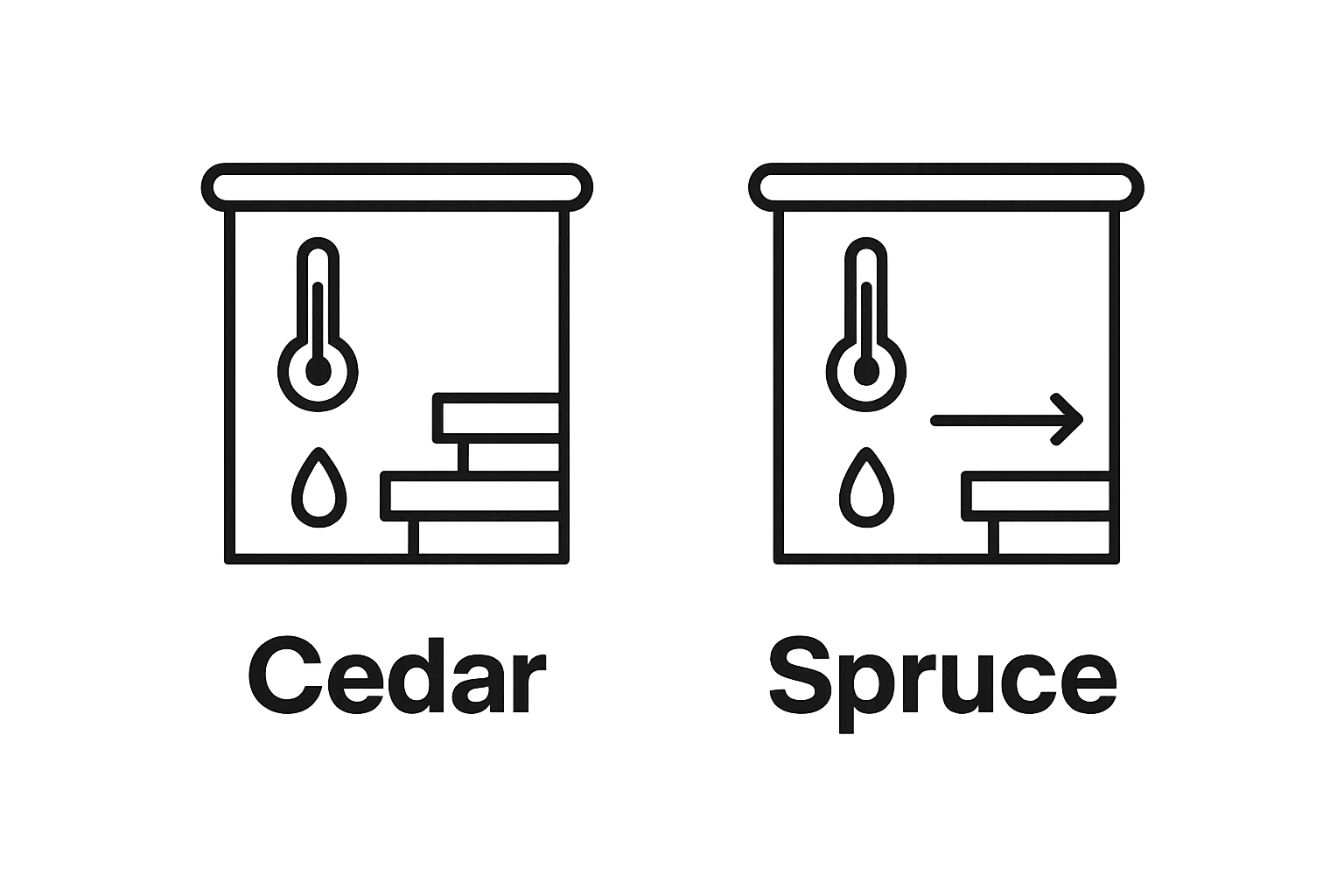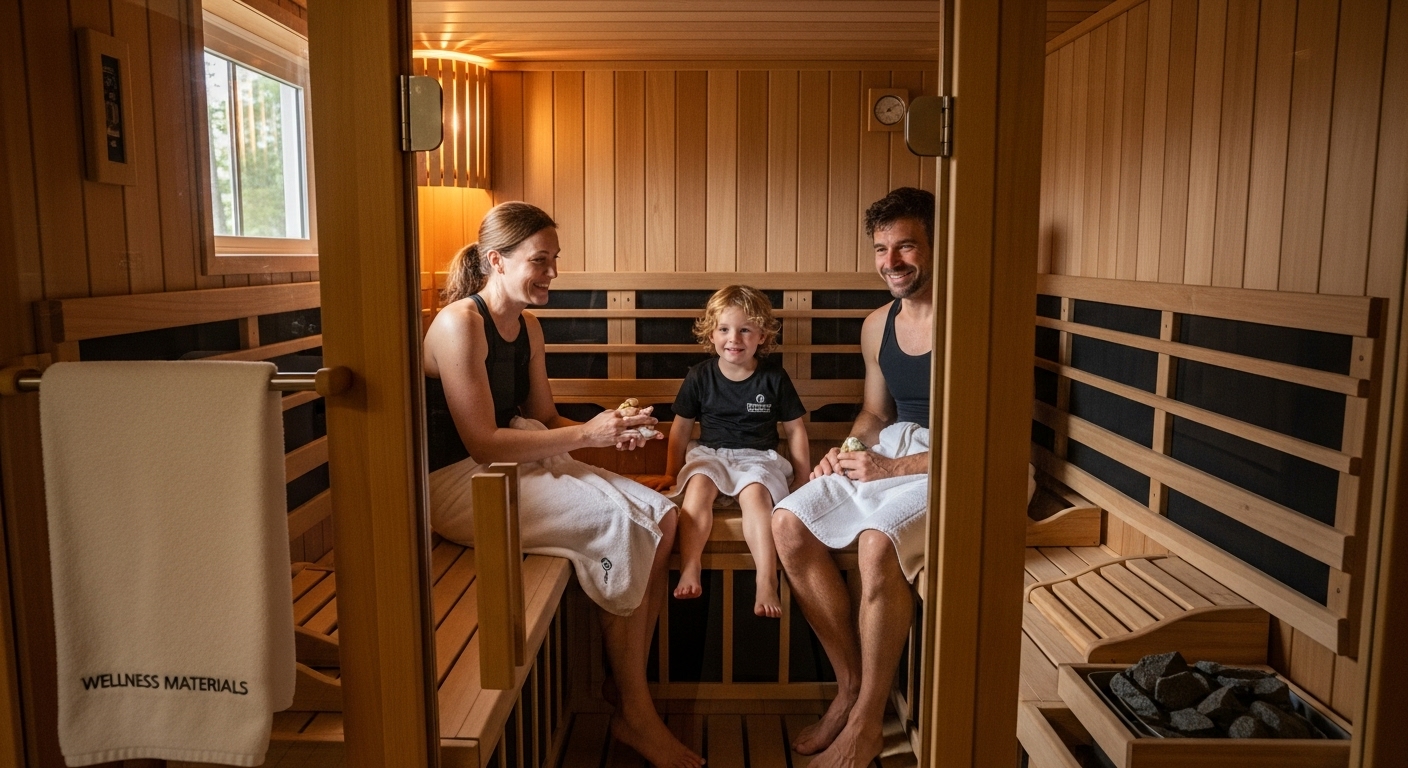
Understanding Sauna Construction Materials for Wellness Spaces
Building a sauna takes more than just piling up a few planks. The type of wood and material you pick can make or break your entire relaxation experience. New studies show that choosing the wrong wood can lead to increased toxins and uneven heat, turning your wellness retreat into a health hazard. Most people think any good-looking timber will do, but the real secret lies in picking the right stuff that keeps you healthy and comfortable. This surprising twist means smart material choices are your best shot at a truly safe and soothing sauna.
Table of Contents
- What Are Sauna Construction Materials?
- Why Sauna Construction Materials Matter For Wellness
- How Different Materials Affect Sauna Performance
- Key Concepts In Choosing Sauna Construction Materials
Quick Summary
| Takeaway | Explanation |
|---|---|
| Select durable, heat-resistant materials | Choose woods like Western Red Cedar and Nordic Spruce for their thermal stability and moisture resistance. |
| Prioritize non-toxic, low-VOC options | Ensure material safety by avoiding harmful chemicals that can affect indoor air quality during use. |
| Evaluate thermal conductivity | Understand how different materials manage heat to enhance user comfort and overall sauna effectiveness. |
| Consider environmental sustainability | Opt for eco-friendly materials to minimize impact and enhance the sauna’s wellness benefits over time. |
| Assess long-term performance criteria | Look for materials with low maintenance needs and high durability to ensure lasting sauna functionality. |
What Are Sauna Construction Materials?
Sauna construction materials represent the fundamental building blocks that determine the performance, durability, and overall wellness experience of a sauna space. These specialized materials are carefully selected to withstand high temperatures, manage moisture, and create an optimal environment for relaxation and health benefits.
Core Material Properties and Selection
When evaluating sauna construction materials, several critical characteristics must be considered. The ideal materials need to possess thermal stability, moisture resistance, and structural integrity. Wood remains the primary material for most sauna constructions, with specific varieties chosen for their unique properties.
According to research from the International Wood Science Conference, certain wood types demonstrate exceptional performance in high-temperature environments. Some preferred wood materials include:
- Western Red Cedar: Naturally resistant to decay and moisture
- Nordic Spruce: High thermal insulation properties
- Hemlock: Smooth texture and excellent heat retention
Thermal and Structural Considerations
The selection of sauna construction materials goes beyond aesthetic appeal. These materials must effectively manage heat transfer, prevent heat loss, and create a safe, comfortable environment. Professional sauna designers consider factors like thermal conductivity, density, and moisture absorption when selecting materials.
Wooden materials are typically combined with specialized insulation layers, heat-resistant sealants, and protective coatings to enhance their performance. The goal is to create a sauna space that maintains consistent temperatures, provides excellent heat distribution, and offers a comfortable, long-lasting wellness experience.
Understanding the nuanced characteristics of sauna construction materials enables wellness enthusiasts to make informed decisions about their sauna investments, ensuring optimal performance and enjoyment.
Here is a comparison of popular sauna wood types, summarizing their key properties relevant to sauna construction and user experience.
| Wood Type | Moisture Resistance | Thermal Insulation | Surface Texture | Durability |
|---|---|---|---|---|
| Western Red Cedar | Excellent | Good | Smooth | High |
| Nordic Spruce | Good | Superior | Slightly textured | High |
| Hemlock | Moderate | Excellent | Very smooth | Moderate |
Why Sauna Construction Materials Matter for Wellness
Sauna construction materials are not just structural components but crucial determinants of the overall wellness experience. The selection of these materials directly impacts health benefits, environmental sustainability, and the psychological comfort of sauna users.
Health Impact of Material Selection
The materials used in sauna construction play a significant role in user health and safety. Toxic-free materials are essential to prevent the release of harmful chemicals when exposed to high temperatures. According to Environmental Health Perspectives, the choice of construction materials can significantly influence indoor air quality and potential health risks.
Key health considerations for sauna construction materials include:
- Low volatile organic compound (VOC) emissions
- Natural, non-toxic material composition
- Resistance to microbial growth
- Ability to maintain consistent thermal properties
Environmental and Physiological Wellness
Beyond immediate health concerns, sauna construction materials contribute to broader wellness objectives. Eco-friendly materials not only reduce environmental impact but also create a more holistic wellness experience. The materials interact with the body’s thermoregulation process, influencing heat absorption, circulation, and overall physiological response during sauna sessions.
The right materials can enhance the body’s natural healing mechanisms, promoting better circulation, stress reduction, and metabolic efficiency. By carefully selecting materials that support thermal transfer and maintain a consistent environment, sauna designers can optimize the potential health benefits of heat therapy.
Understanding the intricate relationship between construction materials and wellness transforms a simple sauna from a basic heat space into a sophisticated health intervention tool.
How Different Materials Affect Sauna Performance
The performance of a sauna is intricately linked to the materials used in its construction. Different materials interact uniquely with heat, moisture, and user comfort, creating distinct thermal experiences and wellness outcomes.
Thermal Conductivity and Heat Distribution
Thermal conductivity represents a critical factor in sauna material selection. Materials with different thermal properties significantly influence heat transfer, retention, and overall user experience. According to research on heat generation systems, the material’s ability to conduct and distribute heat uniformly determines the sauna’s effectiveness.
Key thermal performance characteristics include:
- Heat retention capacity
- Uniform temperature distribution
- Speed of heat absorption
- Thermal stability under high temperatures
Material Composition and User Experience
The composition of sauna construction materials directly impacts sensory perception and physiological response. Wood remains the preferred material due to its natural insulating properties and ability to create a comfortable, breathable environment.
 Different wood types offer unique characteristics:
Different wood types offer unique characteristics:
- Cedar: Excellent moisture resistance
- Spruce: Superior heat retention
- Hemlock: Smooth surface and consistent thermal properties
Beyond wood, emerging materials like ceramic and advanced composites are expanding the possibilities of sauna design. These materials can enhance thermal efficiency, reduce environmental impact, and provide more precise temperature control. The strategic selection of materials transforms a sauna from a simple heated space into a sophisticated wellness instrument, capable of delivering targeted physiological benefits.
Key Concepts in Choosing Sauna Construction Materials
Selecting the right sauna construction materials requires a comprehensive understanding of performance, durability, and wellness potential. This decision involves balancing multiple technical and experiential factors that directly impact the sauna’s long-term functionality and user experience.
Fundamental Material Performance Criteria
Material selection goes far beyond aesthetic considerations. According to the North American Sauna Society, critical evaluation parameters include thermal stability, moisture resistance, and structural integrity. Professional designers prioritize materials that can withstand extreme temperature fluctuations while maintaining consistent performance.
This table outlines fundamental performance criteria to consider when evaluating materials for sauna construction.
| Performance Criterion | Description |
|---|---|
| Thermal Stability | Ability to maintain strength and properties at high temperatures |
| Moisture Resistance | Effectiveness in preventing water absorption and decay |
| Structural Integrity | Capacity to retain physical structure and support under stress |
| Non-Toxic Composition | Lack of harmful chemical emissions during use |
| Long-Term Durability | Resistance to wear, degradation, and need for maintenance over years of use |
Key performance criteria for sauna construction materials encompass:
- Resistance to thermal degradation
- Minimal moisture absorption
- Structural stability under high heat conditions
- Non-toxic chemical composition
- Long-term durability and minimal maintenance requirements
Holistic Material Evaluation Approach
Choosing sauna construction materials requires a holistic perspective that considers environmental sustainability, user health, and long-term performance. Materials must not only meet technical specifications but also contribute positively to the overall wellness experience.
The evaluation process involves assessing materials across multiple dimensions:
- Thermal conductivity and heat distribution capabilities
- Potential health impacts and chemical emissions
- Environmental sustainability and carbon footprint
- Cost-effectiveness and maintenance requirements
By adopting a comprehensive approach to material selection, sauna designers can create spaces that transcend traditional heating environments, transforming them into sophisticated wellness interventions that support physical and mental well-being.

Turn Material Wisdom Into Real Wellness at Home
You have just learned how sauna construction materials influence performance, safety, and well-being. Choosing the wrong materials can mean poor heat retention, unwanted chemical exposure, or a space that simply feels uncomfortable instead of restorative. If you want to transform your knowledge into a lasting investment that benefits your health every day, it is critical to select not only suitable materials but also high-quality sauna solutions optimized for wellness.

Do not let uncertainty about materials or quality hold back your wellness goals. Discover how our curated collection of premium saunas and accessories at Best Life Sauna brings high-performing, non-toxic, and durable solutions into your home. Browse our most popular selections or explore more about how our products prioritize your health, comfort, and long-term satisfaction. Visit our home page to get started right now and claim free shipping on qualifying orders for a limited time.
Frequently Asked Questions
What are the main properties to consider when selecting sauna construction materials?
The main properties to consider include thermal stability, moisture resistance, and structural integrity. These characteristics ensure that the materials can withstand high temperatures and manage humidity effectively.
Why is wood the preferred material for sauna construction?
Wood is preferred due to its natural insulating properties, ability to absorb and distribute heat evenly, and aesthetic appeal. Varieties like Western Red Cedar and Nordic Spruce are especially favored for their durability and thermal performance.
How do sauna construction materials impact user health and safety?
Sauna materials impact health by affecting indoor air quality and potential chemical exposure. Choosing non-toxic materials with low volatile organic compound (VOC) emissions is essential for ensuring a safe sauna environment.
What is the significance of thermal conductivity in sauna materials?
Thermal conductivity is crucial as it determines how quickly and evenly heat is transferred within the sauna. Materials with high thermal conductivity ensure efficient heat retention and uniform temperature distribution, enhancing the user’s experience.

